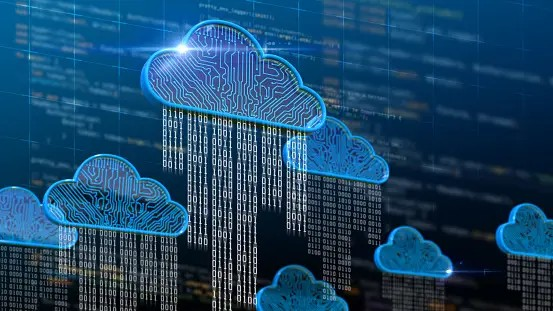Who is responsible for Cloud DR Services

The responsibilities surrounding cloud disaster recovery solution are somewhat complicated since it doesn’t lie in the hands of the cloud service provider alone but also put some role in the hands of cloud vendors and the customers that hire the services of cloud vendors as a CSP for disaster recovery services.
It’s essential to learn everything that surrounds getting a cloud disaster recovery solution or service to help you get the most out of it for your business. We bring you this information in this article.
So let’s dive into the essentials that you should keep in mind when delving into the realm of cloud disaster recovery point objectives. It affects services and a cloud provider disaster recovery solution for your business.
What is cloud-based disaster recovery
Cloud disaster recovery to restore data disaster recovery involves the use of cloud systems and services to improve the data recovery of the IT infrastructure-affected data and systems in cases where a disaster occurs.
Cloud disaster recovery mostly utilizes cloud-based dr for steps like replicating data and IT systems that are essential for business functionality and can’t be replaced when an issue occurs, regardless of the disaster recovery plan or the recovery time objective.
The replications also cover the applications that the business uses to carry out normal operations and that are used to handle the data and critical systems required to restore the optimal functionality of businesses in the shortest timeframes creating a seamless workflow.
Importance of disaster recovery in the cloud environment
Making plans for the disaster recovery side of cloud-based systems that store backup data after a disaster strikes is essential when running a business, especially one that heavily relies on data to function properly and serve your target audience to the fullest.
Proper disaster recovery planning for cloud-based systems helps you reduce the downtimes and power outages that your operations will encounter when a disaster occurs. The resilience to resume normal operations against issues that lead to power outages and data loss is enhanced by a cloud disaster recovery plan.
Differentiating between the responsibilities of cloud service providers (CSPs) and customers
Disaster recovery for cloud base systems doesn’t have its responsibilities lying on the various cloud computing providers, the various cloud-based cloud dr, and the cloud computing services alone but also on the customers who use it for their business as this creates the best results depending on the situation at hand.
They are responsible for the business impact analysis and analyzing the potential disasters the cloud-based system can experience. On the business impact analysis on the whole cloud disaster recovery point objective, customers are responsible for fine-tuning the virtual systems to match the requirements and goals they have set for the business to ensure it matches their initial plan to prevent miscommunication and misinterpretation.
Importance of understanding the division of responsibilities in disaster recovery

It’s essential that both the CSPs and customers deeply understand the roles they play in resume operations and that of the other party, including the importance of these roles and how they affect the result obtained at the end of the whole cloud disaster recovery process.
It helps both parties understand who to hold responsible when there are issues with certain aspects of the cloud disaster recovery plan and operations, making each party stay accountable for their actions and spreading the responsibilities out.
It also creates room for both parties to make a cloud disaster recovery plan more efficiently since each person knows what to handle and the others can align their operations to the preceding operations creating a fast and coordinated workflow to ensure the cloud disaster recovery process is completed faster, more efficiently, and in the best way possible.
Responsibilities of Cloud Service Providers (CSPs)
Cloud dr service providers have the responsibility of managing and protecting the data and other cloud dr storage-based systems that include virtual servers, virtual machines, the networking infrastructure, and data centers and perform maintenance for the server hardware and other necessary aspects.
They are tasked with ensuring that the various cloud storage-based systems, virtual machines, network infrastructure, and data centers are secured, protected from attacks and potential disasters, reliable, and can be depended on when they are needed the most without losing them to natural disasters.
Infrastructure and physical security
Data centers and facilities
CSPs work on optimizing the infrastructure of businesses, which includes the data centers and facilities that the business turns to store backup data for their operations. Data centers are essentials that provide support to cloud dr systems and operations which makes it important for them to be optimized and managed properly to ensure business continuity and prevent data loss.
The CSPs analyze these data centers and provide a rundown to resume business operations create improvements in the current makeup along with a strategy to properly manage them in the long term and use them for disaster recovery plans when the event of a disaster occurs.
They also are responsible for handling migration from physical backup data in centers to cloud-based storage systems, which is a channel to improve the ease of backup data and disaster recovery plans during natural disasters.
Network infrastructure and connectivity
It falls among the responsibilities of CSPs to create a network infrastructure that is robust enough to handle the connectivity and demands of the cloud disaster recovery services, including the data centers and facilities for running a perfectly operational business in cloud environments.
This responsibility includes proper management of the equipment infrastructure that is required for optimum operations of cloud technologies like routers and network switches while deploying them at the physical location at the right time with the appropriate strategies implemented for the best results. They work to prevent network downtimes and to support the seamless operational functionality of cloud environments for the business.
Server hardware and maintenance
Servers in the server capacity secondary data center system of a business serve as the backbone to store every piece of information that the business has and accesses regularly when serving its customers with deliverables.
The maintenance of the servers is also an important task that CSPs handle, which includes the updating of software that the server and the local secondary data center itself are based on, along with the firmware and security systems required to keep it protected at all times.
The health of the server and secondary site itself, its performance, and the utilization of resources it infrastructure are also among the responsibilities of CSPs in this category to ensure the server and secondary local data center itself’s health stays optimal at all times.
Availability and reliability of cloud services
Service level agreements (SLAs)
Reliability is also essential as the CSPs have to be accountable just as much as the customers, and them being the experts need to have a certain level of a disaster recovery plan and strategy as a service and agreement that shows their operations and covers other responsibilities that they perform as they handle your disaster recovery operations.
CSPs are responsible for providing these service level agreements, which should match the business and state the responsibilities of both parties as it is a defined contract required to put both parties on the same page before the disaster recovery workflow commences.
It’s also essential to help you as the customer know the operational patterns of their managed service providers and see how it helps your disaster recovery plan as a service, and your business improve to serve your customers and also meet your already set goals.
Redundancy and fault tolerance mechanisms
CSPs are also responsible for handling all situations with redundancy and providing fault tolerance mechanisms when the need arises in the business during disaster recovery for cloud-based systems. The responsibility to handle redundancy leads them to work with different levels like the redundancy on hardware to duplicate certain physical components like servers and specific network devices and then deploy them to secondary site to provide a substitute to use when the main component encounters an issue.
The others are redundancy on networks and server capacity, which involves using multiple internet service providers to create a backup for a potentially affected cloud-based cloud dr and a secondary data center with redundant network and server capacity, and lastly is data redundancy which involves replicating the data across multiple geographical locations, several platforms and multiple data centers, to serve as a backup during a disaster.
Disaster recovery planning for their own infrastructure
The CSPs cloud vendor that you hire also needs to have their very own cloud disaster recovery plan, strategies, and plans for their cloud infrastructure to ensure that they are set in stone and capable of handling the issues that you have with a cloud dr disaster affecting your business.
It is the responsibility of the CSPs to set this disaster recovery plan and strategies in place as it is essential in proving that their cloud infrastructure they can take your business infrastructural development without encountering any issues during the disaster recovery process.
They perform analysis to determine the potential impact of a disaster and how it affects businesses by tailoring it to what you offer, then create a disaster recovery strategy and plan to counter that impact by including data replication and backup along with your infrastructural redundancy and replication to keep your business data safe when the disaster finally hits your cloud-based systems.
Responsibilities of Customers

Data protection and backup
The process of backing up data has some of its responsibilities laying in the hands of the cloud providers and customers since you, as a customer, will need to pick out the essential pieces of backup data or blocks of data that needs backing up to ensure business continuity and protection business-critical data.
Your selection will most likely be based on the recommendations provided by the CSPs for disaster recovery strategies but the final decision to choose which among the recommended disaster recovery strategies, dr tools or procedures you can go with according to your budget is left to you.
The responsibility for validating the archiving policies that should be attached to your data protection is also left in your hands since disaster recovery planning is a service. It is essential to note that for the proper working of the CSPs operations.
Application and system configuration
The configuration of the cloud environment and technologies for the system and applications are also the responsibilities of you as a customer since it is your business, and you know best what your goals are as a business continuity well as the operations you carry out to serve your customers.
Configuring the various cloud computing resources, IT infrastructure, and applications that you use for your business requires you to fill in business details that should likely not be made available to the cloud providers, vendors, or external parties and handle them yourself or by an in-house employee is the best since the accountability will not be held by the cloud provider or CSPs.
Security and remote access are also a responsibility that lies with cloud and traditional dr approaches and significant business costs you as a cloud dr provider and a traditional cloud dr customer as you need to keep remote access to the business data secured from third parties as intervention and breaches might occur especially when there are no specified compliance regulations and SLAs in place.
Collaboration and Communication
Creating an efficient channel of communication between you and your CSPs allows both parties to work better and deliver the best results during traditional disaster recovery and cloud disaster recovery effects since both parties will be on the same page and work seamlessly, which is the premise for good collaboration between traditional disaster recovery and cloud disaster recovery. It is essential first to create a proper and efficient channel of communication when working so as to keep the other party informed about the progression of the traditional disaster recovery time objective operation for your cloud-based systems in a timely manner in order to prevent any misunderstandings and misalignments when implementing specific techniques. Matching the roles and responsibilities of each party also works to coordinate the planning process when it comes to cloud disaster recovery and makes the testing process seamless, as each responsibility can be completed and accounted for with proper collaboration.
Compliance and Legal Considerations
You need to keep your business protected from the law by prioritizing the regulations in the state and industry in that your business lies which makes it essential to consider the legal requirements and compliance instructions that the CSPs bring to your business operations when performing disaster recovery techniques for your cloud storage and cloud computing based systems. The CSPs must meet the standards of the data protection and privacy laws which span the general protection of data availability in the European Union and other essential regulations attached to the safeguarding of data on the various cloud computing and storage platforms.
Its also essential that the disaster recovery techniques and methods match with the laws in the jurisdiction where your business is located along with the regions that cloud computing and storage providers and their services span. There should also be agreements based on contracts that show the compliance statements of the business and should include clauses for vendors, monitoring auditing, and certain other important aspects for legal consideration.
Service-Level Agreements (SLAs)
You should ensure that the service level agreements that are provided to you are as detailed as possible to cover every aspect that is essential to the cloud platform based disaster recovery process. It should express clear expectations of what you should achieve and what the CSPs are willing to offer you in the agreement so you know what exactly your payment is for during the cloud platform disaster recovery process.
The agreement should also provide performance metrics that the CSPs will use to monitor and validate the effectiveness of the methods DR services that they plan to implement in your cloud cloud-based dr disaster recovery strategy for you to be aware of how effective it is and how far it will go in providing you with the best results that you can find google the cloud- traditional dr disaster recovery platform when disaster strikes itself.
It’s also essential that the SLAs include the availability of the CSPs. Hence, you know how much time they are giving to handle your issue, along with the timeframe that they have set aside to make their service available to you.
Best Practices for Effective Cloud-Based Disaster Recovery
There are certain practices that help you enjoy the best cloud-based disaster recovery service from your CSPs, especially if you want to make the most of your investment. One of these best cloud dr practices that you should consider implementing is defining the objectives for the various of your cloud disaster recovery plan and traditional cloud disaster recovery, strategies, workflows, and of your data as it gives you a rundown of what you want to achieve when the traditional disaster recovery process is done. A clear goal to look forward to and plan your activities around regularly backing up your data should be listed among the objectives you have set out.
You should also try as much as possible to replicate the primary data center and applications that your business uses while utilizing redundant infrastructure to deploy your applications across several availability zones. It’s also great to do periodical testing of your cloud disaster recovery plan to validate it in case there are outdated, and this requires you to monitor the process while maintaining the optimal process for each recovery point objective and its successful completion.


